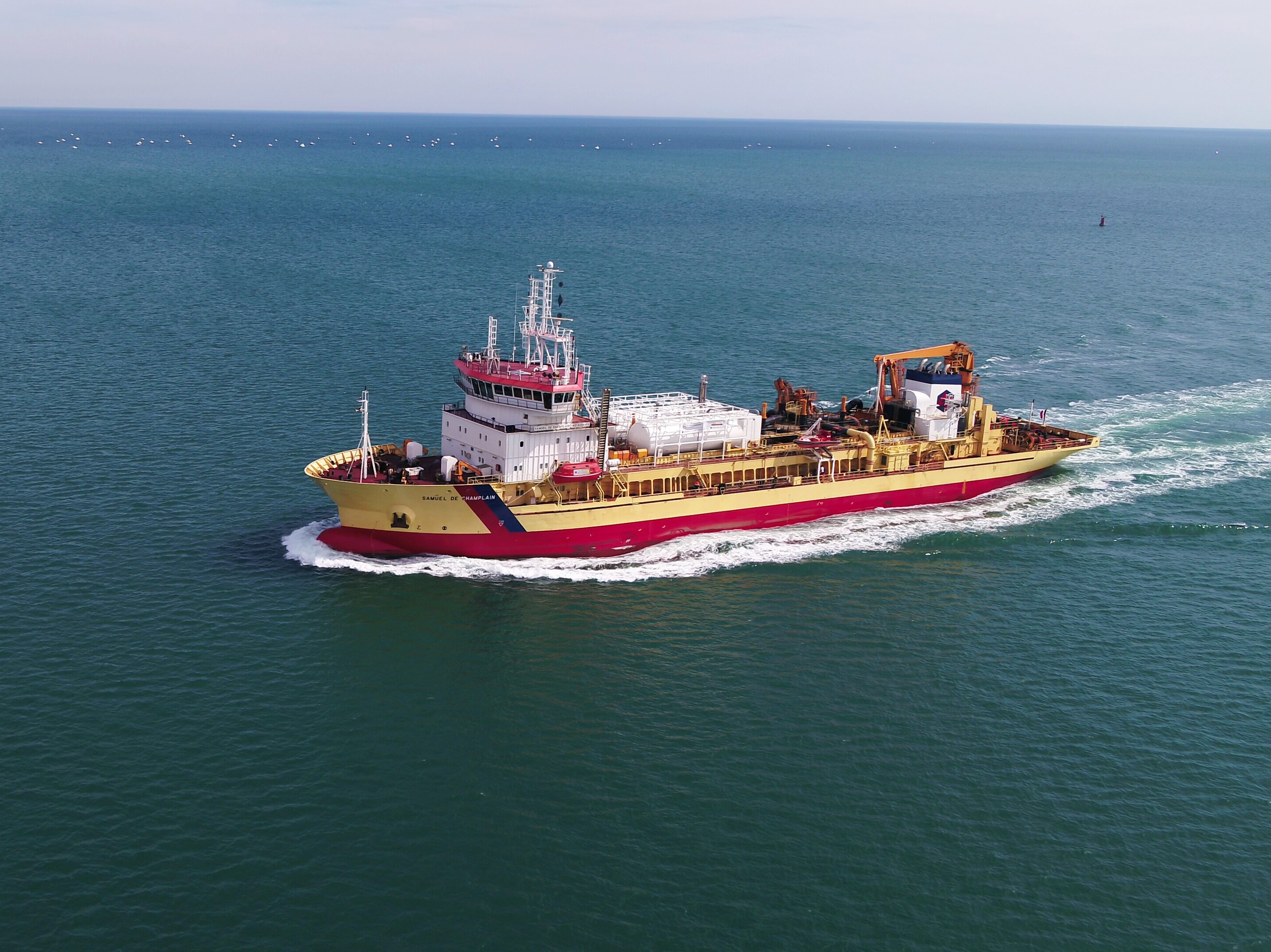Long-term service contract includes supply of spare parts and provision of preventative-maintenance services for MAN 35/44 dual-fuel engines for provisional eight-year period
MAN PrimeServ, the after-sales service brand of MAN Energy Solutions, has signed a long-term service agreement (LTSA) with GIE Dragages-Ports, which includes inspection kits and preventative maintenance services as well as remote assistance (PrimeServ Assist) and engine-fluid analysis (PrimeServ LAB).

The Samuel de Champlain dredger (117 m, 8,500 m³) belongs to GIE Dragages-Ports, headquartered in Rouen, and is fitted out and operated by the Grand Port Maritime de Nantes Saint-Nazaire (Nantes Saint-Nazaire Port).
Three years ago, the vessel was converted to LNG, which involved replacing its diesel generators with 3 × MAN 6L35/44DF engines that can run on diesel fuel and gas; simultaneously, an LNG storage system was also installed on board. The conversion of the Samuel de Champlain to liquefied natural gas was the first of its kind in Europe.

“Based on the experience we had with MAN Energy Solutions when converting the dredger, we wanted to renew our trust in the MAN Energy Solutions team that has a great deal of expertise,” remarked Hubert Louys, Maintenance Manager for Dragages-Ports.
“We are happy to continue our partnership on this project beyond the installation of the new engine, carried out in 2019. Work to optimise maintenance plans has since been carried out in close collaboration with GIE to ensure the dredger’s increased availability,” stated Jordan Morvan, Project Manager, MAN Energy Solutions France.
The MAN 35/44DF engine
The MAN 35/44DF propulsion solution has exceptional performance criteria and a small environmental footprint. Its selection was due to certain, crucial characteristics, including:
- an outstanding load capacity – capable of handling the large load fluctuations typical in dredging applications;
- the option of dredging continuously in gas mode (Tier III) without swapping to diesel mode (Tier II);
- the ability to start in gas mode for minimal NOx emissions from the start of operations.